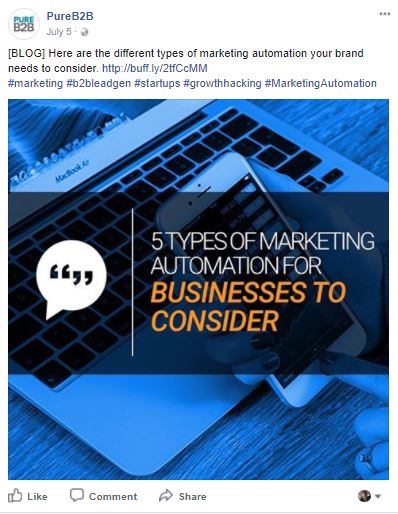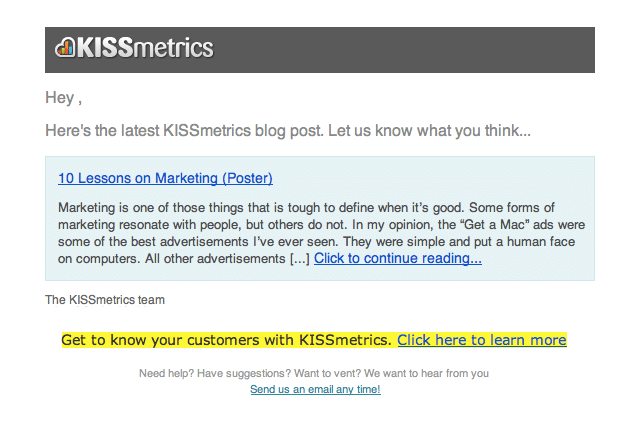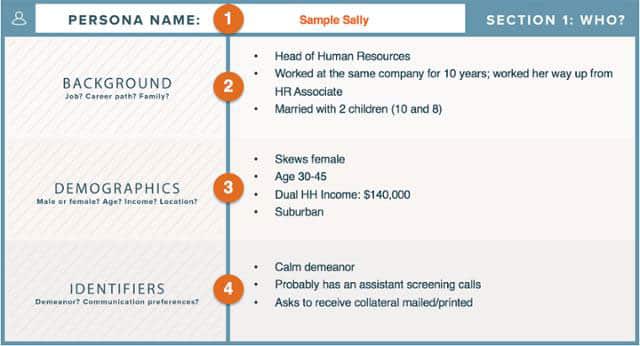
12 Content Distribution Strategies to Make Your Web Traffic Soar
According to Hubspot, Content Marketing costs 62% less than traditional marketing. But it still takes time to produce. And, as they say, time is money. Make every piece of content that you write, photograph, or film count. With more effective content distribution strategies, you can make your web traffic soar to the moon and back.
Even average content marketing produces nearly three times more leads than traditional marketing does, so there’s no reason why it shouldn’t do even better. In fact, it can—in both quantity and quality.
When you optimize your content distribution strategies, you won’t just increase your web traffic—and therefore your leads—it can also improve the quality of those leads. With targeted content distribution strategies, your content will reach more people who need your products and services.
Not only will you have more traffic, but that traffic will be, for the most part, qualified prospects. That’s a game-changer in any industry. Let’s look at four of the most effective content distribution strategies.
Quick Takeaways:
- Repurpose content to maximize your ROI.
- Target customer segments for the most effective reach.
- Don’t forget to keep targeting your current customers with useful and authoritative content.
- Leverage your employees’ enthusiasm to distribute content that inspires trust in their networks.
Content Promotion vs. Content Distribution: Know the Difference
Before you think about promoting that blog posts or infographic you’ve got waiting on your desktop, it’s important to know how and where to do it. When you systematically research your audience, you’ll gather the demographic and behavioral data you need to reach them—on the right platform, in the right channel, and at the right time.
If you want your content marketing campaign to be a success, you need to understand what effective content promotion and content distribution are. It’s not just about investing in great content creators and producing highly valuable content, then sharing it on social media. Laying the foundation to expand your content’s reach and exposure should always be prioritized in any successful content marketing strategy.
The terms content promotion and content distribution may sometimes be used interchangeably. However, there’s a difference between the two, and it’s important for content marketers to understand it.
Content promotion is the act of putting your content on as many channels as possible so that your target audience can find you. Put simply, you’re making your content available to the public.
On the other hand, content distribution has more specific goals. Rather than simply sharing your content and waiting for anyone and everyone to engage with it, you distribute your content to specific, targeted individuals and communities where the likelihood of engagement is increased.

The difference between content promotion and content distribution lies in the objective. Content promotion is all about sharing your content with the world, while content distribution is focused on only targeting the people “high potential” accounts, so that conversion rates are maximized.

Publishing content on your blog, optimizing it for search engines, and sharing it on various social channels is content promotion. Pushing your content through email newsletters, email outreach, and SMS updates is a form of content distribution.
Questions to Ask to Get Content Distribution Right
Now that you understand the difference between content promotion and distribution, you need to ask yourself these questions to determine where and how to reach your audience:
What is your goal in creating this specific piece of content?
Every piece of content should have a goal. Whether it’s to build brand awareness, drive leads, or increase user engagement, you need to identify your goals before any activities can commence.
Do you want people to visit your online store, even if it’s just to browse, or do you want them to sign up for your newsletter so that they can be notified of future discounts and store events?
Your goals will dictate your content sharing strategies—where you’re promoting, when you’re promoting, and how you’re promoting. Whatever your goal is, eliminate distractions by keeping efforts focused solely on activities that drive the achievement of that goal.
Who do you want to read or see your content?
Determine your target market by understanding who you’re trying to reach and why. Create a clear profile of your target audience. This is crucial to your overall content strategy. Without a clear picture of who they are, your strategy won’t be optimized for the right audience.
Are you trying to reach existing customers or potential clients? Do you want millennials to see your content, hoping that their social sharing powers will help you drive brand awareness? Or are you trying to reach out to c-level executives or managers in charge of purchasing and business decision-making?
Either way, you should create detailed buyer personas, taking into account the demographics and psychographics of your target audience.

Demographic Data
- What are their age and gender?
- Where do they live?
- Are they single or married? Do they have children?
- Where do they work (industry and niche), and what is their job role?
- What is their net income?
Psychographic Data
- How do they think?
- What are their goals?
- What are the pain points and challenges they face?
- What are their interests, likes, and dislikes?
How does your target audience consume content?
Now that you have a clear profile of your target audience, you can determine how they consume content.
Are they usually on their smartphone or do they use their laptop or desktop computers more? Do they appreciate short videos rather than long articles? What keywords do they use when searching for content online?
Go where your audience is and speak to them in a language that they understand. Determine how, when, where, and why they consume online content and plan your content promotion and distribution strategies accordingly.
When do you want your audience to see your content?
Some content is evergreen, while others are time sensitive. For example, if you’re creating a piece for Christmas, then your content needs to reach your audience before the holidays. For specific content like this, it’s important to know that time is of the essence.
Again, you can always go back to your buyer persona data to determine how you can best reach your audience in time for the holiday rush.
12 Pro Tips and Strategies for Content Distribution
You’ve already answered the pertinent questions and have the information all laid out. You can now start to develop and implement an effective content promotion and distribution plan.
1. Conduct a Situational Analysis
This is where it all begins. Audit your content and available channels. You need to determine all the platforms, channels, software, and tools you wish to include. List and analyze what channels you already have that can help you promote and distribute your new content.
If you have an existing blog, Facebook page, Twitter page, or other digital channel, determine how many followers or subscribers each channel already has, and whether your audience engages with your brand on that channel.
Are these existing channels and tools enough for you to achieve your goals? Are you equipped with resources and manpower to launch a widespread promotional campaign on multiple channels?
If not, then determine what you can afford to remove, change, or add to your existing channels. This is when you should revisit your marketing budget and reevaluate the content strategies that generate the best results.
2. Optimize Your Content for Search Engines
SEO can help you narrow down the audience your content will reach. Choose a long-tail keyword that your target audience uses to search for content. Tools such as Semrush Keyword Magic and Ahrefs Keywords Explorer can help you look for relevant keywords with significant search volume.
Focus on only one to two pillar keywords to help you narrow down your targeting and rank on search engines. This will also make it easier for search engines to determine what your content is all about.
Make sure you’re incorporating your keyword on the page itself. Proper on-page SEO will make your content more visible and easier for search engines to crawl and index.
3. Distribute Your Content on Social Networks
Facebook, Twitter, Instagram, LinkedIn, and YouTube are some of the most commonly used social networks in content promotion. Get your content out there and post it on the social channels where your target audience spends time.
Join groups and communities where you can find your target audience. For instance, if you created content specifically targeting mothers, a good idea would be to look for social channels that mothers commonly use to source out information. Do they use Pinterest often or are they more engaged on Facebook?
Again, you need to go back to your buyer persona to help you determine which channels are relevant to your target audience.
Of course, you should publish a link to your blog posts on your social media channels. Those posts will likely show up on the feeds of your followers. But there’s even more you can do when you repurpose your content on channels that specifically cater to your target market.
Let’s say, for example, you make boho-chic women’s jewelry. Your target market is millennial and Gen Z women.
You just published a blog post on the history and legends surrounding this month’s birthstone. You want to get that content some extra traction—so you want to reach out to people in your target market who aren’t your social media followers.
Where does your target market hang out?
Probably on sites like these:
- Instagram: With plenty of visual pop and edgy photos, this site is the perfect place to stage your jewelry with a model clothed in period attire—and a catchy description—such as “Channel your inner Cleopatra when you wear emeralds on your wrist. Discover more about this stone’s legendary powers” (and then include the link to your blog post).
- BuzzFeed: With half of its traffic from avid readers aged 18 to 34, this online magazine features quirky, newsworthy stories that appeal to the lion’s share of its market. Rework your blog post to be more provocative. Something like “Were emeralds the source of Cleopatra’s powers?” would be a great start. Since many people, including some in your target demographic, still believe in the healing and spiritual powers of gems, you could unpack those for your readers. Just make sure you have a disclaimer that indicates you’re not claiming any of these powers for your product.
- Pinterest: This site serves as a visual bulletin board for one’s favorite things. Its audience is primarily female, and it’s a great place to showcase your wares. Just make sure you link to your blog post.
If you’re a B2C company, chances are your target market has their favorite places to browse. For B2C companies, it’s important to discover where yours are. Whether you’re demonstrating how to use your new widget on YouTube or you’re a car dealer repurposing your blog post into a video about why you need to change the oil on your own Chevy, you need to get your content out and in front of interested new audiences.
If, on the other hand, you’re a B2B company, you, too, need to repurpose content in the places your target market frequents. Provide readers with content that either discusses the latest developments in the industry or thought leadership content that solves tough challenges for them, and you’ll reach businesses who’ve never heard of you before.
Platforms like LinkedIn, SlideShare (make sure to have professional-looking infographics), Huffington Post, Forbes, Inc., as well as industry-specific publications, are all platforms on which you can repurpose your content. If you can’t get into the national publications, try to get your content on regional B2B platforms.
One word of caution, though. Make sure that the website you publish your repurposed content on is of the highest quality. Otherwise, B2B prospects will get the impression that your products and services aren’t high-quality, either.
Whether you’re going for the B2B or the B2C market, you need to nurture relationships both online and offline, Sprout Social’s Brent Barnhart advises. We couldn’t agree more.
When it comes to content, organic shares can help your reach grow exponentially. Expand your online network to reach out to potential customers in each segment through industry-related LinkedIn groups and forums. Reach out locally to industry influencers through face-to-face meetings. Help them solve their challenges—and they’ll be glad to click “Share” on your content.
4. Tap into the Power of Semi-Automated Social
One way to remain efficient and avoid overwhelm when pushing out content on media is to automate your posting. It’s paramount to remember, however, to follow automation etiquette. You don’t want to risk seeming automated; your audience needs to believe that there is a person behind the presence.
There are several available tools to help you automate your posting. Here are some great places to start:
- Socedo helps you to identify relevant leads on Twitter and start nurturing them with automated engagement.
- Social Jukebox allows you to set up collections of social posts linking to your evergreen content, with rules for reposting them on the schedule of your choice.
- Narrow enables you to grow your following with relevant audience members, on autopilot.
These tools offer features that monitor and analyze your social media activities, so you can determine what is most effective for your brand.
You can even use standard social media management tools like Tweetdeck and Hoot to track the conversations around your delivery methods, ultimately revealing your strongest leads.
Remember to keep your eye on your social media activities in real time. Stay actively engaged. The risk in relying strictly on automation is too great to ignore. For best results, perform some trial and error to arrive at the right balance between social media automation and manual engagement.
5. Don’t Forget Your Employees
One of the most powerful ways to distribute your content is through your employees. Since only about a third of people trust a brand’s official messaging—and nearly 90 percent of people trust recommendations from people they know personally— your employees can be the one factor that can tilt the buying decision in your favor.
When you engage employees at work and encourage them to share content that will help their own contacts, you put that 90 percent trust factor to work for your products and services.
That’s huge—whether you’re primarily B2C or B2B. When you put this and the rest of these content distribution tips to work for you, you’ll see your web traffic increase—and with it, your revenue.
6. Consider Paid Distribution Channels
Paid advertising is now more targeted than ever, be it through Facebook, Twitter, Instagram, Google, or any other major advertising platform. You can also consider retargeting ads so that your content has a second chance to reach users who either entered your keywords in a search engine, visited your website, or a range of other triggers.
You may be thinking that you have a piece of highly valuable content and that you shouldn’t be paying for people to read it or see it. No, you’re paying so that people will know it exists. Again, no matter how great your content is, if it’s not seen, it’s like it doesn’t exist at all.
7. Send Out an Email Newsletter to Current Customers and Subscribers
Email is a great way to establish and nurture a relationship with your existing customers and followers. It’s also a super effective content distribution channel.
If you already have email subscribers, then you should repackage your content for email, and let your subscribers know that there’s new content available on your blog or video sharing channel.
Make sure to segment your email list so that you’re only sending your content to the subscribers that want it. Personalizing your email will also help build your relationship. Consider email marketing in your content distribution plan to reach your target audience.
When you publish a blog post that will interest a particular segment of your market, send it to those customers and subscribers who can put it to use in their daily lives or to run their businesses more efficiently.
But don’t stop there. These people have shown an interest in your products and services—and have demonstrated that interest by becoming subscribers. Your customers have taken that interest a step further with at least one purchase.
Reward them with even more content that can help them solve their greatest challenges. At the end of your email, include a link to download a white paper or e-book that unpacks your blog post’s content in greater depth. Or, include a video that they can watch on YouTube, bookmark, and come back to later.
Don’t distribute content to these valuable customers and subscribers unless you have a specific goal in mind. Make sure that goal aligns not only with your business goals, but more importantly, with theirs.
Some companies send their subscribers every piece of content they publish on their blog. That’s a mistake. Only send content that will help that segment of your subscribers. Otherwise, you risk annoying them with an inbox crammed with irrelevant content.
8. Let Your Sources Know About Your Content
When you create content, especially if it’s an article or whitepaper, you most likely cited references and linked back to their original content.
Reach out to these sources and let them know that you mentioned their expert advice in your article. This will encourage your sources, who are most likely industry leaders as well, to read, share, and support your content marketing efforts.
9. Reach Out to Industry Influencers
Influencer marketing is a great way to distribute content. Since influencers have a niche following, you should do your research and find influencers with audiences that fit your buyer persona. The goal here is to persuade these influencers to become your brand ambassadors and help you reach your target audience.
With influencer marketing, not only are you gaining exposure to your target audience, but you’re also building trust because you’re associating your content with a trusted authority figure.
10. Reach Out to Those Most Engaged
Your most engaged audience members are the people most likely to buy from you. Based on your findings utilizing the tools mentioned above, you can focus your efforts on those who have been sending out signals that they’re interested. Ideally, you can eventually convert these people into brand advocates to foster low-cost, high return marketing.
Put forth your best effort to retain your engaged audience. Consistently provide valuable content and ensure that you’re utilizing a mix of media formats to reach your target audience, including videos, podcasts and case studies.
In addition, you may want to investigate tools that manage influencers and foster onsite interactions. This customer engagement application allows you to communicate with customers personally on your website, inside mobile apps and by email. The focus here is on two-way communication, further nurturing your leads by answering their questions in real time.

When you engage with anonymous site visitors on a one-on-one basis, however, it’s important to remember that these people are not yet ready to hear your sales pitch. Rather, keep the interactions light and focused on being helpful. If you can position your brand as a leader in its industry, and one that’s generous with useful advice, you’ll be able to keep people coming back for more wisdom, eventually advancing them sown your funnel towards closing the sale.
11. Keep Nurturing Your Leads
Are you creating awesome content, publishing it on your website on a consistent, regular basis? You’re on the right track, but unless your content marketing strategy encompasses plans for getting relevant eyeballs on those content pages, you’ve still got work to do.
Certainly, intriguing, well-researched and genuinely valuable content will be the foundation of your lead generation effort. The articles, blog posts, webinars, podcasts and whitepapers you offer need to give your audience a feeling of empowerment to overcome their challenges and achieve their business goals. Your content should inspire trust and establish you as reliable, knowledgeable resource.
Without reaching the right audience, however, even the most on-target content will fail to progress your leads through the sales funnel systematically. Considering that B2B buyers are often 57% of the way through their purchasing decision before ever reaching out to an actual person, it’s imperative to ensure that your content reaches and resonates with your audience at all phases of their buyers’ journeys.
Content distribution tactics including social media posting, triggered emails and syndicating blog posts are solid ways to get started with showcasing your content to a wide audience. Familiarity with the ins and outs of ToFu, MoFu and BoFu will assist you in discovering which type of content to push at each stage of the sales funnel. In addition, gathering as much knowledge as possible about your targets can greatly improve your content distribution ROI.
Since 78% of consumers trust customized content, your goal should be to gather intelligence on your ideal targets, and then make sure that the best content gets in front of those targets.
12. Analyze Your Results
Measuring your marketing ROI must become a standard part of your practice. Since you are likely mixing up your content distribution by employing not only social media channels but also other tactics like SEO, PPC advertising and email marketing, it’s important to determine which practices are successful in nurturing your leads. Given that 93% of CMOs report that they are under more pressure than ever to deliver measurable ROI, gathering statistics about your success must take top priority.
Actively track your site visitors’ referral sources, engagement and conversion. Google Analytics can do this for you – it’s the most popular onsite traffic analytics tool, as it’s free, and the reports cover everything from reverse funnel visualizations to segmented onsite browsing journeys to audience demographic data. Study its findings frequently to monitor not only your site traffic but more importantly, the behavior of your referred visitors.
Leadfeeder, another useful tool which works on top of your Google Analytics account, can collect detailed data about individual website visitors. Are you attracting relevant leads with your content distribution efforts? Leadfeeder tells you exactly what companies your audience members work for. In addition, it provides insight into their specific interests, based on the path they took through your site and which products, features or pieces of content they lingered over.

HotJar is another great tool for illustrating user analytics. It provides heat maps that show you where people are spending the most time on your site, giving you ultimate access to user behavior. HotJar will generate screen recordings that show you exactly what a visitor does on each page they visit. They provide insight into three key elements of user behavior: what brings a user to your site, what causes him to leave, and what persuades him to act.
Proper tracking and analysis will help you quickly make decisions on what to improve in your content distribution strategy and overall sales funnel.
New Products Need a New Distribution Strategy
If you’ve developed a new product or service that will appeal to a new customer base, you need to create and distribute content on channels that appeal to them. You’ll need to do some research on their pain points, their needs, and their goals, advises DivvyHQ’s Brody Dorland.
Finding influencers in that new market, he points out, can help jumpstart your content marketing to your new target market. If you can afford to pay an influencer to create content to engage your new market, do so. If not, find a way to make it in that influencer’s best interest to create and distribute content for you.
Not only must you distribute that content on new channels, says Dorland, but you should publish content targeted to that customer base weekly, creating a new subscriber list for them rather than adding them to one of your existing customer segments.
Customized, personalized content earns new customers’ trust by a factor of 78 percent. It pays to do your homework on your new buyer personas so you can combine your insights with smart content placement and targeted topics to keep them moving along the sales funnel.
Create Value and Distribute Strategically
Community building, lead nurturing, and keeping customers engaged are crucial to the success of your business, and content marketing is playing an ever-increasing role in all of these. Recognize that producing quality content is only the start of a successful content marketing strategy; content distribution is critical. Utilize all the tools at your disposal, from the potential reach of your social media channels to the power of customer analytics. Generating as much knowledge as possible about your audience, and talking to them on every channel possible, will inevitably lead to more sales.
If you are ready to get more qualified traffic to your site with quality content that’s consistently published, check out our Weekly Blog Content Service. Set up a quick consultation, and I’ll send you a free PDF version of my books. Get started today and generate more traffic and leads for your business.






